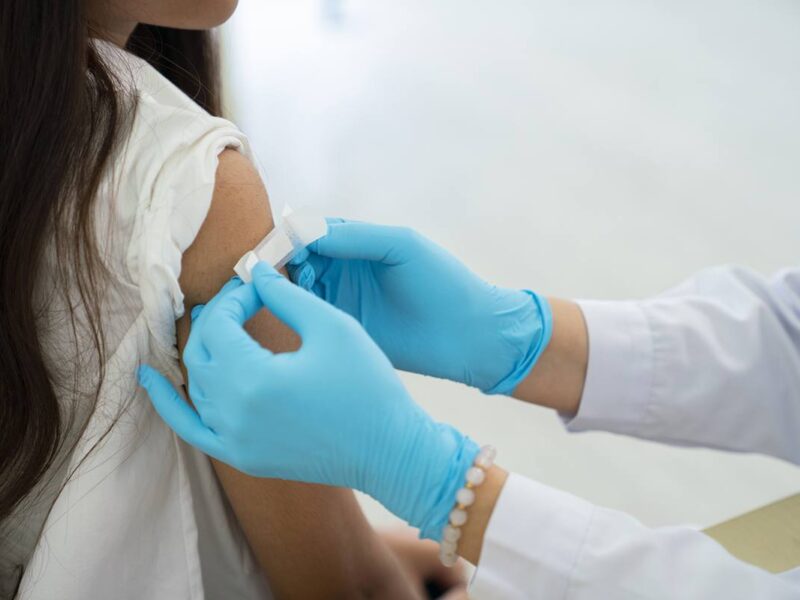Texas A&M Lab Identifies New COVID-19 Variant; Genome Suggests Potential Resistance To Antibodies
Scientists at the Texas A&M University Global Health Research Complex (GHRC) have identified a variant of the COVID-19 virus — “BV-1” — that could present a new challenge to public health.
Although found in only one individual who had only mild symptoms, the Texas A&M scientists decided they should share information about the variant with scientists across the globe.
That’s because published cell culture-based experiments from other labs have shown several neutralizing antibodies are ineffective in controlling other variants with the same genetic markers as BV-1.
“We do not at present know the full significance of this variant, but it has a combination of mutations similar to other internationally notifiable variants of concern,” said GHRC Chief Virologist Ben Neuman. “This variant combines genetic markers separately associated with rapid spread, severe disease and high resistance to neutralizing antibodies.”
“We have not detected any more instances of this variant,” Neuman added. “We have not grown or tested this virus in any way. This announcement is based purely on the genetic sequence analysis done in the lab.”
BV-1 is related to the United Kingdom (UK) variant of SARS-CoV-2 (the coronavirus that causes COVID-19). The “BV” stands for “Brazos Valley,” the seven-county region of Texas where Texas A&M and GHRC are located.
The Single Case Of BV-1
GHRC first detected BV-1 in a saliva sample taken from a Texas A&M student as part of the university’s ongoing COVID-19 testing program. The sample tested positive at GHRC on March 5. It was re-tested and confirmed at a federally regulated lab at CHI St. Joseph Regional Hospital. The student resides off-campus, but is active in on-campus organizations. The student was given Texas A&M’s general reporting guidelines.
The student later provided a second sample that tested positive on March 25, indicating the variant may cause a longer lasting infection than is typical of COVID-19 for adults ages 18-24. A third sample obtained on April 9 was negative and revealed no evidence of virus.
The student presented mild cold-like symptoms in early to mid-March that never progressed in severity and were fully resolved by April 2.
Sharing Vital Information, Probing The Unknown
Scientists from the GHRC have submitted a paper on BV-1 to the Centers for Disease Control and Prevention in Atlanta.
GHRC also deposited its sequence data on BV-1 with GISAID, the Munich-based science initiative that collects SARS-CoV-2 sequences from around the world. The official name of the BV-1 variant is hCoV-19/USA/TX-GHRC-BV1-EQ4526591/2021. It is among thousands of variants scientists have found worldwide.
Neuman said GHRC will watch closely for more cases involving BV-1, given its potentially concerning genetic make-up. The research complex has found scores of SARS-CoV-2 mutations in recent weeks through an especially widespread genetic sequencing program.
While many U.S. labs limit sequencing to severe COVID-19 cases, Texas A&M is casting a wider net, including asymptomatic students, to find concerning variants before they cause severe illnesses.
Neuman said the wider investigation and information sharing are aimed at giving scientists, public health policy makers and the public as much information as possible in the ongoing quest to limit transmission.
“Sequencing helps to provide an early warning system for new variants,” Neuman said. “Though we may not yet understand the full significance of BV-1, the variant highlights an ongoing need for rigorous surveillance and genomic testing, including among young adults with no symptoms or only mild symptoms.”
About the Global Health Research Complex (GHRC): Located at Texas A&M University, GHRC is an $86 million, 102,000-square-foot, state-of-the-art, nationally distinct facility and core laboratory serving as a resource for the entire Texas A&M University System to combat emerging disease threats. GHRC supports and advances multi-disciplinary large animal and insect vector research, education and training opportunities for faculty at Texas A&M and their partners from other academic institutions and industry.
About Research at Texas A&M University: As one of the world’s leading research institutions, Texas A&M is at the forefront in making significant contributions to scholarship and discovery, including science and technology. Research conducted at Texas A&M generated annual expenditures of more than $1.131 billion in fiscal year 2020. Texas A&M ranked in the top 25 of the most recent National Science Foundation Higher Education Research and Development survey based on expenditures of more than $952 million in fiscal year 2019. Texas A&M’s research creates new knowledge that provides basic, fundamental, and applied contributions resulting in economic benefits to the state, nation, and world. research.tamu.edu
Media contact: Benjamin W. Neuman, bneuman@tamu.edu





